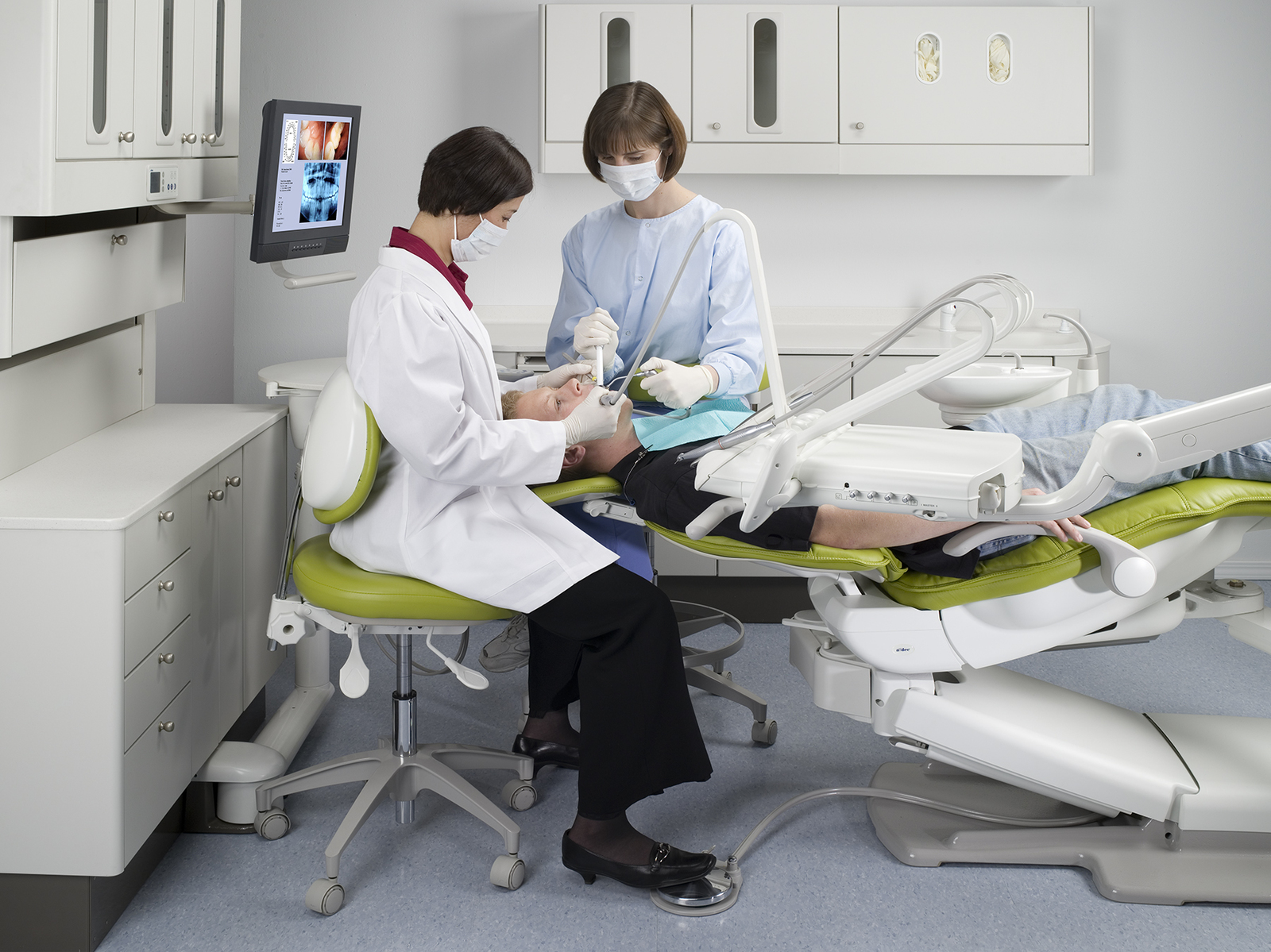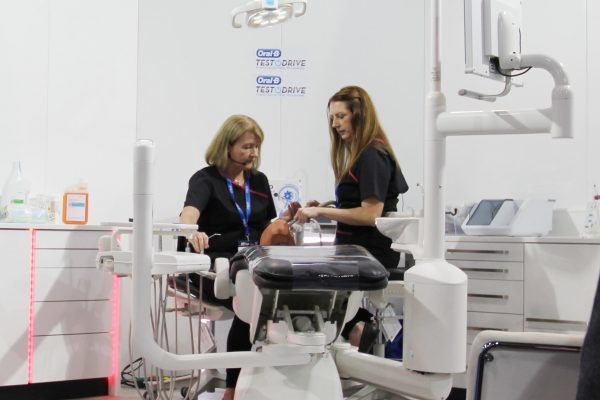
Kath Eastwood explains why dentists should practice what they preach when it comes to prevention and look after their posture before it’s too late
We constantly promote prevention as the best way to maintain oral health, yet as dental professionals, do we look after ourselves in the same way?
I have been a practicing dentist for nearly 30 years. During this time, like many other practitioners, I have experienced musculoskeletal issues, resulting in appointments with both chiropractors and physiotherapists.
Industry statistics show that musculoskeletal disorders are the most likely reason for dentists to take time off work.
Unplanned absences can cause many issues in a dental practice for other staff and patients and there may also be financial implications for the staff member and a cost for any treatment they require.
In 2000, I decided to work with my dental nurse, Hayley, to make changes to ensure that we could work more comfortably. Together, we learned to perfect the four-handed dentistry technique and ensure we always have good posture to prevent musculoskeletal issues.
You may even find us performing yoga stretches between appointments, which we have adapted to work in the dental surgery.
For the past few years, we have been teaching the four-handed technique to foundation dentists and to those with longer tenures during bespoke courses.
Four-handed dentistry
The technique aims to improve the comfort and quality of treatment for patients, while also enabling both dentist and dental nurse to work in a more comfortable position and with improved efficiency.
The four-handed technique promotes good team-working skills as dentist and nurse learn to work truly in sync with each other, which can in turn enhance day-to-day job satisfaction.
When implementing four-handed dentistry within the dental surgery, we must consider: the clinician (dentist, hygienist or therapist), the dental nurse and, most importantly, the patient.
Many of my colleagues who practice dentistry daily are faced with challenges that can be avoided with the use of this technique.
The correct use of the technique
The correct use of four-handed dentistry enables you to:
• Maintain moisture control: in dentistry, saliva can be our enemy when we need to work in a dry field. Many of the procedures we carry out rely on good moisture control and when this is not achieved, we can reduce treatment success
• Protect the soft tissues: the patient’s lips, cheeks and tongue are a challenge to control, and we are all aware that certain patients provide more of a challenge in this regard than others. Working effectively in a predictable and planned way has great benefits; with effective retraction, your treatments become less stressful, more predictable and both clinician and nurse can see the treatment area more clearly
• Effective instrument exchange: I know that many clinicians will dislike the thought of having instruments on the assistant’s side. However, especially if the dentist is wearing loupes (which is a must for ergonomic positioning), then turning and altering focus to select the preferred instrument requires a break in concentration, adjustment of focus and usually a twist of the spine. The nurse, if part of an effective team, will have selected the instrument needed and passed this safely in a fraction of the time – without even a need to ask – while the dentist stays focused on the tooth being treated.
The benefits
For both clinician and nurse, the four-handed technique reduces repetition, increases efficiency and reduces fatigue.
For the clinician, this ensures that their position remains static and visual focus with loupes is directed on the tooth being treated, without breaks in concentration. For the dental nurse, it allows full involvement in the treatment and utilises the skills they have, improving job satisfaction.
In our surgery, we are a team and we cannot do our job properly without each other’s help.
As with almost anything, poor habits are easy to adopt and harder to lose. Prolonged and repeated poor postures can develop into serious and inhibiting musculoskeletal disorders.
Working with pain and discomfort in the shoulders, neck and back is no fun when chairside time with the patient is a huge part of the job.
Of course, it is possible to see your GP, a physiotherapist or chiropractor for treatment to alleviate the pain, with or without medication, but unless you treat the cause, symptoms inevitably return.
Learning correct posture from the outset is the ideal for undergraduates and training nurses; they should be taught this during training. New graduates in particular might have trouble because many have not worked with a dental nurse in treating patients until they have qualified.
True synergy between clinician and nurse can only be achieved through dedicated training, continued practice and the willingness of both parties to adapt.
During dental procedures, it is imperative that every part of the procedure is as efficient as it can be, to decrease the chair time while providing the best treatment. Our patients often comment on how ‘slick’ we are when we work together.
If your patient feels reassured, comfortable and relaxed, they will be much more confident about the treatment you are providing for them. Patient anxiety is reduced and we find that treatments can proceed in a more predictable way.
 We have noticed that we are able to provide a higher quality of work when both staff and patients are relaxed and confident. Stress levels in dentistry are high compared to many other occupations and minimising this as much as possible is beneficial to all. In our courses, we address this in a multitude of ways considering team working, communication and self-management techniques.
We have noticed that we are able to provide a higher quality of work when both staff and patients are relaxed and confident. Stress levels in dentistry are high compared to many other occupations and minimising this as much as possible is beneficial to all. In our courses, we address this in a multitude of ways considering team working, communication and self-management techniques.
Correcting bad habits if you are already practising and recognising the early symptoms of musculoskeletal pain is vital to a long and healthy career. Self-management is possible when conditions are reversible.
Soon, we will also have a further qualification in corrective exercise specialisation. This will enable us to better assist attending delegates to understand their musculoskeletal imbalances.
Practising four-handed dentistry is not solely dependent on training: it is also necessary for dental professionals to utilise equipment that helps facilitate the four-handed approach.
Your dental chair, for example, must allow for optimum practitioner and patient positions, while protecting the ergonomic needs of everyone involved. I prefer to work with the A-dec 500, which has an ultra-thin backrest and a slim-profile headrest, enabling me work in a comfortable position – legs under the patient, elbows at my side.
The dentist’s and assistant’s stools from A-dec are also extremely supportive. Their tilted seats distribute weight more evenly, allowing for proper circulation and promoting musculoskeletal health.
Kath Eastwood and Hayley Drury have been working co-operatively through the four-handed dentistry technique since 2001. Over the last couple of years, Kath and Hayley have been involved in delivering courses on the four-handed technique to both foundation dentists and other colleagues. This technique involves the dental nurse in all aspects of the treatment and utilises the great skills they have to offer.
If you would like to know more about four-handed dentistry, or are interested in attending a training course by Kath and Hayley, email [email protected]


